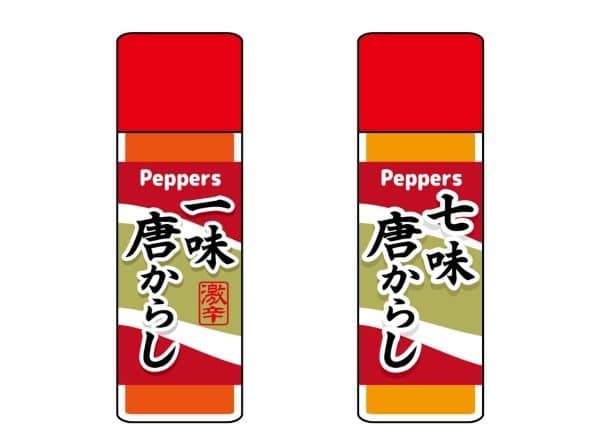Ichimi Togarashi VS Shichimi: How To Use Differently
In Japanese cuisines, people use a wide variety of seasonings. Ichimi and Shichimi Togarashi are two of the most common. They are usually not used for seasoning during the cooking process but for each individual to adjust the taste to their own liking on their dining table. However, many people, even Japanese, don’t know the actual difference. Here is a guide to Ichimi Togarashi vs Shichimi.
Difference Between Ichimi Togarashi & Shichimi
“mi (味)” in both names means “flavor”, and Shichimi and Ichimi differ in the number of spices they contain.
Ichimi Togarashi (一味とうがらし)

As you can see from its color, Ichimi is made of only chili pepper that we can say a pure chili powder. So, Ichimi is basically hotter than Shichimi. I recommend you to use ichimi when you want to add some spiciness to the meal without changing its original flavor.
Shichimi Togarashi (七味とうがらし)

On the other hand, Shichimi is composed of chili peppers and seven seasonings such as seaweed, sesame seeds, and ginger. Shichimi has an aroma and mild flavor, so it is best to use it when you feel that the taste is monotonous.
Ichimi Togarashi vs Shichimi Depending on Dishes.
Dishes go well with Ichimi (一味)
Nabe (Hot Pot)
You may add Ichimi when you don’t want to spoil the flavor of the hot pot soup but want to make it a bit hotter or stronger taste.
Pizza
Some people use Ichimi as a substitute for jalapeño.
Chinese Cuisine (Mapo Tofu, Chili Shrimp, etc.)
Chinese cuisine in Japan is often seasoned a little milder for the Japanese. So, Ichimi is sometimes used to bring the authentic Chinese taste.
Dishes go well with Shichimi (七味)
Udon / Soba
Shichimi is used to intensify the flavor of udon and soba noodles, which are usually blandly seasoned.
Gyudon
Most Gyudon restaurants have Shichimi on the table.
Yakitori
As each Yakitori skewer has several pieces on it. I recommend that you eat the first few pieces as they are and then season the rest to your liking.
Miso Soup / Tonjiru Soup
Miso soup has a gentle taste, so if you want to accentuate the flavor a little more, you can add Shichimi.
How To Keep Them
Lastly, how should we store Shichimi and Ichimi properly? Both Shichimi and Ichimi are sensitive to heat, humidity, and sunlight. So we should keep them in the refrigerator. Most products sold in Japan come in tightly sealed containers. But when you buy them sold in packs, it is better to transfer them to another container to keep them in a better condition.
Most Japanese pubs (Izakaya) have Ichimi and Shichimi on the table. So next time you are there, please try using it for Izakaya food according to your preference! Or why don’t you use them when you cook Japanese cuisines!




